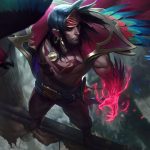Are you curious to know who has emerged victorious in the League of Legends Worlds tournament throughout the years?
Well, look no further! This article will take you on a journey through the history of Worlds, highlighting the champions from Season 1 all the way to Season 10.
With each passing year, the competition gets fiercer, the strategies more refined, and the stakes higher than ever.
So, buckle up and get ready to dive into the thrilling world of Lol Worlds winners!
Key Takeaways
- Fnatic emerged as the winners of the League of Legends World Championship in Season 1, showcasing their skill and expertise in the game.
- Season 2 saw the dominance of teams like Taipei Assassins and Azubu Frost, solidifying League of Legends as a global phenomenon.
- Season 3 showcased the potential of underdogs in esports, with Fnatic defeating Korean giants and SK Telecom T1 emerging as the dominant force.
- Season 4 had dominant teams like Samsung White and SK Telecom T1, with surprising upsets from underdogs and significant shifts in the game due to meta changes.
Season 1 (2011
You’ll be interested to know that in Season 1 (2011), the team Fnatic emerged as the winners of the League of Legends World Championship. Season 1 was a milestone in the history of competitive League of Legends, marking the beginning of what would become a global phenomenon.
During this inaugural season, Fnatic established themselves as one of the most dominant teams, showcasing their skill and expertise in the game.
Fnatic’s journey to victory was not without its challenges. The tournament was filled with surprising upsets, as teams from all over the world showcased their talent and determination. However, Fnatic’s exceptional teamwork and strategic gameplay set them apart from the competition. They faced formidable opponents, but their unwavering commitment to excellence propelled them to the top.
The Season 1 World Championship was a testament to the growth and potential of esports. It paved the way for future tournaments, solidifying League of Legends as a competitive game on the global stage.
Fnatic’s triumph in Season 1 remains a cherished moment in the hearts of fans and players alike, serving as a reminder of the thrilling and unpredictable nature of esports.
Season 2 (2012
In Season 2, you’ve got to see who took home the championship title. It was an exhilarating year for League of Legends esports, filled with dominant teams and unexpected surprises.
Here’s a breakdown of the action-packed season:
-
Dominant Teams: The year was dominated by two powerhouse teams: Taipei Assassins from the GPL region and Azubu Frost from Korea. These teams showcased exceptional skill, strategic prowess, and amazing teamwork throughout the tournament. Fans were left in awe of their performances and eagerly awaited their face-off in the grand finals.
-
Unforgettable Matches: Season 2 was full of nail-biting matches that kept viewers on the edge of their seats. The quarterfinals saw epic showdowns between CLG.EU and Team WE, with both series going to five games. These intense battles showcased the depth of talent and fierce competition in the League of Legends scene.
-
Surprise Upsets: Despite the dominance of Taipei Assassins and Azubu Frost, there were a few surprises along the way. Teams like Moscow Five and NaJin Sword put on impressive displays, taking down formidable opponents and making their mark on the tournament. Their unexpected victories added an element of unpredictability to the competition.
-
The Grand Finals: The culmination of Season 2 was a clash between Taipei Assassins and Azubu Frost. In an intense best-of-five series, Taipei Assassins emerged victorious, dethroning the Korean giants and becoming the champions of Season 2. Their incredible journey showcased the power of underdogs and the magic of esports.
Season 2 of League of Legends Worlds was a thrilling spectacle, filled with dominant teams, surprising upsets, and unforgettable moments. It solidified the game’s position as a global phenomenon and set the stage for even more excitement in the years to come.
Season 3 (2013
The third season of League of Legends brought new teams and exciting gameplay to the forefront. This was a pivotal year for the esports scene, as it showcased the rise of dominant teams and surprising upsets that kept fans on the edge of their seats.
In Season 3, the Korean powerhouse team SK Telecom T1 emerged as the dominant force in the League of Legends world. Led by the legendary mid-laner Faker, they displayed an unprecedented level of skill and strategy that was unmatched by any other team. Their coordination and teamwork were on another level, and they breezed through the competition, securing their place as the reigning champions.
However, Season 3 was not without its fair share of surprises. The European team Fnatic, led by their charismatic captain xPeke, shocked the world by defeating the Korean giants in the group stage. This unexpected upset showcased the potential of the underdogs and proved that anything can happen in the world of esports.
Overall, Season 3 was a thrilling spectacle filled with dominant teams and surprising upsets. It solidified the reputation of SK Telecom T1 as the team to beat, while also highlighting the resilience and skill of the underdogs. It was a year that showcased the true potential of League of Legends as a competitive esport and left fans eagerly anticipating the next season.
Season 4 (2014
In 2014, the competitive League of Legends scene witnessed the rise of dominant teams that left an indelible mark on the history of the game. Teams like Samsung White and SK Telecom T1 showcased their superior skills and strategic prowess, establishing themselves as powerhouses in the league.
However, amidst their dominance, the year also saw surprising upsets, with underdogs like Kabum Esports making waves and toppling giants. These upsets not only showcased the unpredictable nature of the game but also highlighted the impact of meta changes, as teams had to adapt their strategies to the ever-evolving gameplay.
Dominant Teams in 2014
You’ll remember that 2014 saw some dominant teams at Worlds. The competition was fierce and filled with surprising upsets that kept fans on the edge of their seats.
Here are four teams that showcased their dominance and executed some of the most effective strategies of the year:
-
Samsung White: Known for their aggressive playstyle and impeccable teamwork, Samsung White swept through the competition, leaving a trail of defeated opponents in their wake.
-
Star Horn Royal Club: Led by the legendary Uzi, Star Horn Royal Club showcased their dominant strategies and mechanical prowess, making it to the grand finals and leaving a lasting impression on the audience.
-
OMG: With their innovative picks and strategies, OMG proved to be a force to be reckoned with. Their calculated gameplay and ability to adapt to different situations made them a formidable opponent.
-
Edward Gaming: Known for their strong laning phase and strategic map control, Edward Gaming displayed their dominance by consistently outplaying their opponents and securing crucial objectives.
These teams left a lasting impact on the competitive scene in 2014, setting the stage for future seasons of intense gameplay and thrilling upsets.
Surprising Upsets That Year
Now, let’s talk about the surprising upsets that occurred during the 2014 League of Legends Worlds Championship. Get ready to be amazed by the underdogs triumphing against all odds.
This was a year filled with unexpected twists and turns, where the favorites were left in shock and awe. The stage was set for the David and Goliath battles that would define the tournament.
Teams that were considered underdogs rose to the occasion, displaying an extraordinary level of skill and determination. They defied expectations and toppled giants, leaving spectators in disbelief. It was a year of true Cinderella stories, where the little guys showed the world what they were made of.
These unexpected upsets added an extra layer of excitement and unpredictability to an already thrilling tournament.
Impact of Meta Changes
The impact of meta changes on the 2014 League of Legends Worlds Championship was evident in the strategies employed by teams. Patch updates brought about significant shifts in the game, leading to exciting and unpredictable matches.
Here’s a glimpse into how these changes influenced player strategies and team compositions:
-
Aggressive Rotations: Teams quickly adapted to the new meta and focused on early game aggression. They prioritized roaming and coordinated movements to secure objectives and gain advantages.
-
Diverse Champion Pools: With the meta changes, teams explored different champion picks and strategies. This resulted in an array of unique team compositions, showcasing the creativity of players and their willingness to experiment.
-
Objective Control: Teams recognized the importance of securing objectives, particularly dragon and Baron Nashor. They developed strategies to contest and control these key objectives, often leading to intense team fights.
-
Adaptability: The meta changes forced teams to be adaptable and flexible. They had to quickly adjust their strategies mid-game to counter their opponents, proving their ability to think on their feet and make crucial decisions.
Overall, the impact of meta changes on the 2014 Worlds Championship was profound, elevating the level of competition and showcasing the skill and adaptability of the teams.
Season 5 (2015
Don’t forget that SK Telecom T1 emerged victorious in Season 5 (2015) of the League of Legends World Championship. This season was an absolute rollercoaster of emotions, with dominant teams from different regions clashing on the international stage.
The impact of regional rivalries was felt strongly throughout the tournament, as teams fought tooth and nail to represent their regions and prove their superiority.
In 2015, SK Telecom T1 stood out as one of the most dominant teams in the world. Led by the legendary Faker, they showcased exceptional teamwork, individual skill, and strategic depth. Their aggressive playstyle and ability to adapt to the ever-changing meta made them a formidable force to be reckoned with.
But it wasn’t just SK Telecom T1 that made waves in 2015. The tournament saw fierce competition between teams from regions like North America, Europe, China, and Korea. The rivalry between these regions added an extra layer of intensity to the matches, as each team aimed to claim the title of the best in the world.
The dominance of SK Telecom T1 and the impact of regional rivalries in Season 5 of the League of Legends World Championship made it an unforgettable year in the history of esports. It showcased the incredible talent, dedication, and passion of the players, and left fans in awe of the level of competition on display.
Season 6 (2016
In the thrilling world of League of Legends, Season 6 brought with it a wave of unexpected champions that left fans in awe. From underdog teams rising to the top, to unconventional picks dominating the meta, it was a season filled with surprises.
The impact of meta changes cannot be overstated, as it forced players to adapt and learn new strategies, ultimately reshaping the game itself. Season 6 will always hold a special place in the hearts of players and fans alike, as it left a lasting legacy of innovation and excitement.
Unexpected Champions in 2016
Can you believe that 2016 saw some unexpected champions in the League of Legends Worlds tournament? It was a year filled with surprising team performances and underdog victories. Let’s take a closer look at some of the most memorable moments from that year:
-
The rise of Albus NoX Luna: This wildcard team from the CIS region shocked the world by making it out of the group stage and into the quarterfinals. Their aggressive playstyle and fearless attitude made them a fan favorite.
-
Samsung Galaxy’s redemption: After a disappointing performance in 2015, Samsung Galaxy came back stronger than ever in 2016. They defeated some of the tournament favorites and ultimately claimed the championship title.
-
ROX Tigers’ dominance: The ROX Tigers were considered one of the favorites to win it all. With their innovative strategies and exceptional teamwork, they showcased why they were feared by all their opponents.
-
SK Telecom T1’s three-peat: Despite facing tough competition, SK Telecom T1 once again proved why they were the best. Led by the legendary Faker, they secured their third World Championship title, solidifying their dynasty in the League of Legends scene.
The 2016 Worlds tournament will always be remembered for its unexpected twists and turns, and the triumph of the underdogs.
Impact of Meta Changes
The impact of meta changes on the game of League of Legends can be seen in the strategies and playstyles of professional teams. As the meta shifts and evolves, teams must adapt their strategies in order to stay competitive. Champion balance changes also play a crucial role in shaping the competitive scene. These changes can either make or break a champion’s viability in professional play, leading to a shift in team compositions and playstyles. To illustrate the emotional response that these changes can evoke, let’s take a look at a table showcasing the impact of meta changes on the competitive scene:
| Meta Change | Team Strategy |
|---|---|
| Tank Meta | Defensive |
| Assassin Meta | Aggressive |
| Poke Meta | Tactical |
These shifts in the meta not only challenge teams to adapt and innovate, but also create excitement and anticipation for fans, as they witness the evolution of the game and the strategies employed by their favorite teams.
Legacy of Season 6?
Looking back at Season 6, you might be curious about the lasting impact it had on the competitive scene of League of Legends and how it influenced the strategies and playstyles of professional teams. Here are four key aspects that shaped the legacy of Season 6:
-
Meta Evolution: Season 6 saw the rise of dynamic strategies, such as lane swaps and fast-paced skirmishes, which revolutionized the game. Teams became more adaptable and creative in their approaches, leading to exciting and unpredictable matches.
-
SK Telecom T1’s Dominance: The significance of SK Telecom T1’s dominance cannot be overstated. With their unparalleled teamwork and individual skill, they showcased the highest level of play, inspiring countless teams to strive for excellence.
-
Roster Changes: Season 6 witnessed numerous roster changes, with teams reshuffling their lineups to find the perfect combination of players. These changes often brought fresh perspectives and revitalized teams, creating a more competitive and unpredictable environment.
-
International Recognition: Season 6 marked a turning point for the global recognition of League of Legends. The explosive growth of viewership and the thrilling matches at Worlds solidified the game’s status as a premier esports title, captivating fans worldwide.
The legacy of Season 6 lives on in the strategies, dominance of SK Telecom T1, impact of roster changes, and the continued growth of League of Legends as a global phenomenon.
Season 7 (2017
TSM didn’t make it to the Worlds finals in Season 7. It was a disappointing outcome for the team and their fans, as they had high hopes going into the tournament.
However, there were several factors that contributed to their early exit.
One of the key reasons behind TSM’s underperformance was the surprising strategies employed by their opponents. Teams like Misfits and Gigabyte Marines caught TSM off-guard with their unconventional playstyles and innovative tactics. TSM struggled to adapt to these unorthodox strategies, which ultimately led to their downfall.
In addition, there were some notable underperformances from key players on the TSM roster. Bjergsen, who is often considered one of the best mid laners in the world, had a relatively lackluster performance during the tournament. His inability to carry games and make game-changing plays put a lot of pressure on the rest of the team.
Despite their disappointing performance in Season 7, TSM remains a formidable team in the North American League of Legends scene. With their strong infrastructure and talented roster, they have the potential to bounce back and make a deep run in future tournaments.
It will be interesting to see how they adapt and improve in the seasons to come.
Season 8 (2018
Hey there! Let’s dive into the exciting world of Season 8 in 2018.
One of the most intriguing aspects of this season was the rise of unexpected champions. From underdogs to champions, we witnessed teams that were not traditionally considered powerhouses making their mark on the competitive scene.
Additionally, the impact of meta changes played a crucial role in shaping the outcomes of matches, challenging players to adapt and strategize in new and innovative ways.
Get ready to explore the thrilling narratives and game-changing moments that unfolded during Season 8!
Unexpected Champions in 2018
While there have been many favorites throughout the history of Worlds, 2018 saw unexpected champions rise to the occasion. Surprising teams utilized underdog strategies to secure victory, leaving fans in awe. Here are four remarkable moments from that unforgettable year:
-
G2 Esports’ Perkz: Known for his mid-lane prowess, Perkz showcased his versatility by transitioning to the bottom lane. His exceptional mechanics and innovative plays caught opponents off guard, propelling G2 Esports to new heights.
-
Fnatic’s Broxah: As an up-and-coming jungler, Broxah proved his worth on the international stage. His calculated aggression and expert pathing disrupted enemy plans, enabling Fnatic’s dominant run to the finals.
-
Invictus Gaming’s TheShy: TheShy’s top-lane prowess was unrivaled, as he displayed incredible mechanics and outplayed opponents effortlessly. His unorthodox champion picks and split-pushing strategies caught everyone off guard.
-
Cloud9’s Licorice: Licorice emerged as a force to be reckoned with, showcasing his exceptional skills in the top lane. His ability to absorb pressure and carry games on unconventional picks propelled Cloud9 to a remarkable semifinal finish.
These unexpected champions proved that anything is possible in the world of competitive League of Legends, igniting the passion and excitement of fans worldwide.
Impact of Meta Changes
The impact of meta changes on competitive League of Legends can greatly influence the strategies and playstyles of teams. When the meta shifts, teams must quickly adapt their strategies to stay competitive. This means that teams need to constantly analyze and study the changes in the meta, as well as the role shifts in team compositions. Understanding these changes allows teams to adapt their playstyles accordingly, whether it’s focusing on early aggression or prioritizing late-game scaling.
One of the most exciting aspects of the impact of meta changes is the rise of unexpected champions. In 2018, we witnessed underdog success stories where unconventional picks disrupted the meta. This not only brought diversity to the competitive scene but also forced teams to rethink their strategies and adapt to these unexpected champions. These disruptions proved that the meta is always evolving and that innovation can come from anywhere.
Season 9 (2019
You’ll be interested to know that the winners of Season 9 of the League of Legends World Championship were FunPlus Phoenix. In 2019, FunPlus Phoenix emerged as one of the most dominant teams in the League of Legends competitive scene.
Their journey to the championship was marked by their exceptional gameplay and the impact of roster changes they made throughout the year. Here are four key aspects that contributed to their success:
-
Strategic Brilliance: FunPlus Phoenix demonstrated a deep understanding of the game’s meta and executed their strategies flawlessly. Their ability to adapt to different playstyles and capitalize on their opponents’ weaknesses set them apart from other teams.
-
Individual Skill: The team boasted a roster full of talented players who excelled in their respective roles. From the explosive plays of their AD carry, Lwx, to the calculated shotcalling of their support, Crisp, each member of FunPlus Phoenix brought something unique to the table.
-
Synergy and Coordination: FunPlus Phoenix showcased exceptional teamwork and coordination throughout the tournament. Their ability to synchronize their movements and communicate effectively led to decisive victories against formidable opponents.
-
Adaptability: FunPlus Phoenix proved their adaptability by successfully incorporating new strategies and tactics into their gameplay. They were not afraid to experiment and innovate, which allowed them to stay one step ahead of their opponents.
Season 10 (2020)
Get ready for an exciting journey through Season 10 of the League of Legends World Championship. In 2020, the tournament showcased dominant strategies that had a significant impact on the outcome of matches. The online format added an extra layer of intensity and unpredictability to the competition.
Let’s take a look at the dominant strategies that emerged in 2020:
| Dominant Strategies | Impact |
|---|---|
| Early game aggression | Teams focused on securing early game advantages through aggressive plays, aiming to snowball their lead and control the game. |
| Split pushing | Some teams opted for split pushing strategies, where one player would push a lane while the rest of the team created pressure elsewhere on the map. This strategy forced opponents to make difficult decisions and created opportunities for objective control. |
| Teamfighting | Other teams emphasized teamfighting, relying on their superior coordination and mechanical skill to win crucial engagements. These teams excelled in executing intricate teamfighting compositions and capitalizing on small advantages. |
The online format of Season 10 also had a significant impact. Without the usual crowd atmosphere and LAN environment, teams had to adjust to playing from their respective locations. This change leveled the playing field to some extent and tested the mental fortitude and adaptability of the players.
Season 10 of the League of Legends World Championship was a thrilling showcase of dominant strategies and the resilience of the players in the online format. It demonstrated the ever-evolving nature of the game and the ability of teams to adapt and succeed in new circumstances.
Frequently Asked Questions
How Many Teams Participate in the League of Legends World Championship Each Year?
The League of Legends World Championship is a highly anticipated tournament each year. To qualify, teams must go through a rigorous process. The format of the tournament varies, but typically features a set number of teams competing for the title.
What Is the Prize Pool for the League of Legends World Championship?
The prize pool for the League of Legends World Championship is one of the largest in esports history, often surpassing other tournaments. From epic comebacks to stunning upsets, the World Championships have produced countless unforgettable moments.
How Are the Teams Selected to Participate in the World Championship?
To participate in the League of Legends World Championship, teams are selected based on their performance in regional leagues and international tournaments. Wildcard teams earn their spots through regional qualifiers, where they compete against other teams for a chance to compete in Worlds.
Which Region Has the Most World Championship Titles?
The region with the most World Championship titles is a highly debated topic among League of Legends fans. Many factors, such as home field advantage and the success of teams from each region, are analyzed to determine the answer.
Are There Any Players Who Have Won the World Championship Multiple Times?
There have been several players who have won multiple world championships. It’s truly impressive! The names of these exceptional players include Faker, Bengi, and Uzi. They have proven themselves to be the best of the best.





